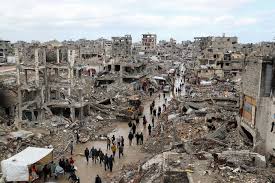The Future of Gaza: Insights into 2025

Introduction
The situation in Gaza has been a topic of intense international focus, particularly given its significant geopolitical implications and humanitarian challenges. As we look ahead to 2025, the prospects and future of this region remain uncertain, but understanding the underlying dynamics is crucial for citizens, policymakers, and humanitarian organizations.
Current Situation in Gaza
As of late 2023, Gaza continues to face significant challenges stemming from ongoing conflicts, internal governance struggles, and humanitarian crises. The United Nations estimates that over two million people in Gaza are in urgent need of humanitarian aid, including food, water, and medical supplies. The blockade imposed since 2007 has further exacerbated the region’s economic despair, with unemployment rates soaring above 50%.
Political Landscape
Looking toward 2025, the political landscape in Gaza is marked by the presence of Hamas, which has been in control since 2007. Efforts for reconciliation with the Palestinian Authority have seen limited success, and geopolitical tensions with Israel remain high. The international community’s response, including mediation efforts and aid distribution, will be significant in shaping the future of governance and stability in the region.
Humanitarian and Development Efforts
Numerous NGOs and international organizations continue to work tirelessly in Gaza to alleviate suffering and promote development. In 2023, the U.N. launched a multiyear strategy aiming to enhance infrastructure and public services while addressing urgent humanitarian needs. The effectiveness of these initiatives will be critical in assessing the quality of life in Gaza as 2025 approaches.
Forecast for 2025
While several factors will heavily influence the situation in Gaza, projections for 2025 suggest that without significant change in the conflict dynamics, the humanitarian crisis may worsen. However, there are also pathways for potential stability if peace talks make progress and if international support increases. Increased investment in community resilience, education, and economic opportunities could lead to positive developments for the youth and families of Gaza, shattering cycles of poverty and uncertainty.
Conclusion
As we gaze into 2025, Gaza stands at a crossroads. The decisions made by local and global leaders today will shape the chances for peace and development in this historically troubled region. Continued support from the international community and a genuine commitment to peace on all sides will be essential in determining whether Gaza can transform its narrative from one of conflict to one of hope and opportunity. For readers and individuals interested in the fate of Gaza, remaining informed and advocating for humanitarian assistance could play a pivotal role in the path forward.









